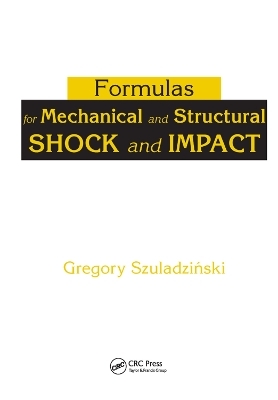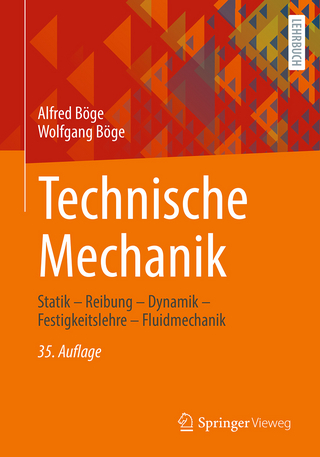
Formulas for Mechanical and Structural Shock and Impact
CRC Press (Verlag)
9780367385071 (ISBN)
Formulas for Mechanical and Structural Shock and Impact is a self-contained and concise presentation of formulas and methodology you can use to determine dynamic response to shock loads, to help you decide on the optimal design. This book offers insight into how objects and structures respond to sudden, strong—and generally short—impulses. In our computer-oriented environment, in which structural programs are used for most large analytical tasks, engineers can still benefit from certain manual calculations and analytical methods to quickly assess the situation at hand.
Exploring a range of mechanical and civil engineering applications, the text enables engineers to manually calculate what happens to structures and objects when pushed, pulled, jerked, or blasted by providing ready access to formulas required for advanced problem solving. It describes relatively simple methods of dealing with many design situations, in which simple spreadsheets or MathCad are sometimes employed. These scenarios may include:
Determination of preliminary figures on the anticipated dynamic response of a system that is in an early stage of design and for which a full-scale computation is not practical
Preparations for physical testing or for large-scale calculations, during which a dynamic model is generated
Indirect verification of computer-generated results, to explain questionable results or guard against hidden errors
Structural safety can be facilitated through the use of simple approximate solutions early in the design process, often eliminating the need for complicated and more involved solutions later. This book is a valuable companion for modern
Dr. Gregory Szuladziński received his master’s degree in mechanical engineering from Warsaw University of Technology in 1965 and his doctoral degree in structural mechanics from the University of Southern California in 1973. From 1966 to 1980, he worked in the United States in the fields of aerospace, nuclear engineering, and shipbuilding. He has done extensive work in computer simulations of seismic events and accidental dynamic conditions as related to the safety of nuclear plants and military hardware. From 1981 until the present time, he has been working in Australia in the fields of aerospace, railway, power, offshore, automotive, and process industries, as well as in rock mechanics, underground blasting, infrastructure protection, and military applications. He has a number of publications to his credit in the area of nonlinear mechanics. His first book on the subject, Dynamics of Structures and Machinery: Problems and Solutions, was published in 1982. Dr. Szuladziński has been involved with the finite-element method of simulation of structural problems since 1966. In 1978–1979, he worked as the principal analyst for Control Data in Los Angeles in support of fi nite-element analysis (FEA) codes. Since the early 1990s he has been working on computer simulations of such violent phenomena as rock breaking with the use of explosives, fragmentation of metallic objects, shock damage to buildings, structural collapse, fluid–structure interaction, blast protection, and aircraft impact protection. He has conducted a number of state of-the-art studies showing explicit fragmentations of structures and other objects. He is a fellow of the Institute of Engineers Australia, a member of its Structural and Mechanical College, a member of the American Society of Mechanical Engineers and of the American Society of Civil Engineers.
Concepts and Definitions. Natural Frequency. Simple Linear Systems. Simple Nonlinear Systems. Wave Propagation. Yield and Failure Criteria. Impact. Collision. Cables and Strings. Beams. Columns and Beam–Columns. Plates and Shells. Dynamic Effects of Explosion. Penetration and Perforation. Damage, Failure, and Fragmentation. Selected Examples. Appendices. Index.
| Erscheinungsdatum | 30.09.2019 |
|---|---|
| Verlagsort | London |
| Sprache | englisch |
| Maße | 178 x 254 mm |
| Gewicht | 1470 g |
| Themenwelt | Technik ► Bauwesen |
| ISBN-13 | 9780367385071 / 9780367385071 |
| Zustand | Neuware |
| Informationen gemäß Produktsicherheitsverordnung (GPSR) | |
| Haben Sie eine Frage zum Produkt? |
aus dem Bereich


